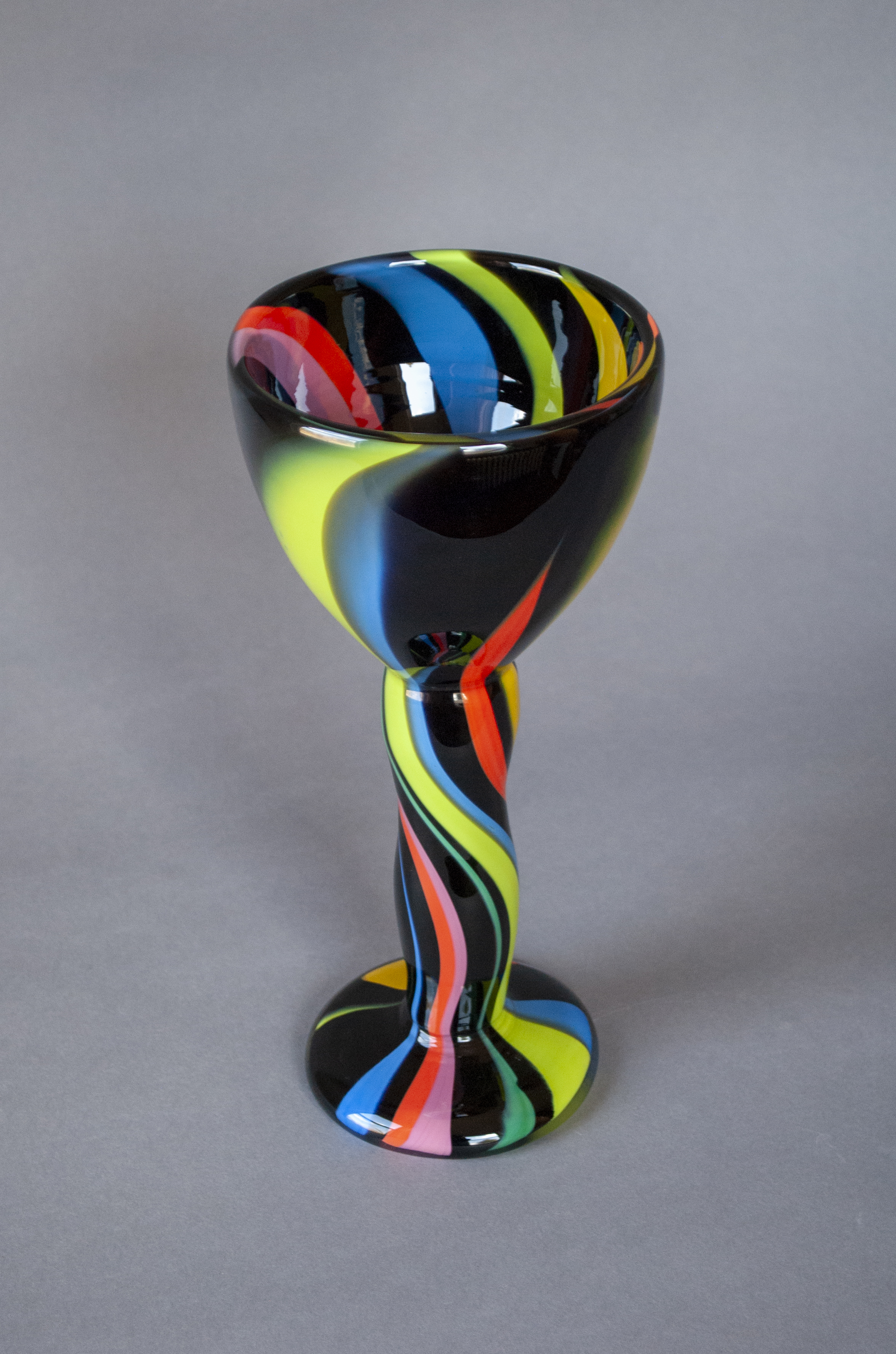Tooth-chipper Goblets
A heavy-lifting approach to the goblet form. The goblet is a quintessential vessel in the glassblower’s bag of tricks. They are practiced to refine technique and finesse. A typical Venetian-style goblet is exceedingly thin, and made in several parts, oftentimes with ornate bitwork added to the stem of the vessel. There is a certain impracticality that makes them both fun to make and exciting to use. They have become a flex of skill for many of today’s glassblowers.
I wanted to do the opposite. A heavy, thick goblet made out of one continuous mass of glass. An object that effectively worked as a representation of a goblet, not one that someone would actually use. Very little blowing is involved in the shaping process. I often refer to these as hot-sculpted as opposed to blown, because so much shaping is done with the glass being solid. An alternative title to these in the early days of making them was “chunky-clunky.” But “tooth-chipper” had a more humorous practicality to it that made them almost instantly understood as an object.
One of my favorite cups to make with these is the martini, because of how it can show off the polychromatic patterns that I sometimes use. But the martini is also one of the easier forms to take shape because of the natural progression of the making process. The first several of these that I made used only one color each, and had no predetermined form in mind. There is a free-jazz quality of responding to the process and the glass that I love and these goblets let me, quite literally, sculpt the glass intuitively.
With my style of blowing glass, I try to avoid using torches outside of the gloryhole as much as possible. It is something that was instilled into my practice when I was first learning glass blowing under the mentorship of Ché Rhodes. Oftentimes they are used as a crutch. There is something athletic about not using torches where you only get one shot to get something right (or straight). Sometimes you miss the shot. With this element of the process in mind, the stems and feet of the Tooth-chipper forms are tough shots to make. But in the perspective of goblet-making, thin or thick, they’re all tough shots to get straight.






